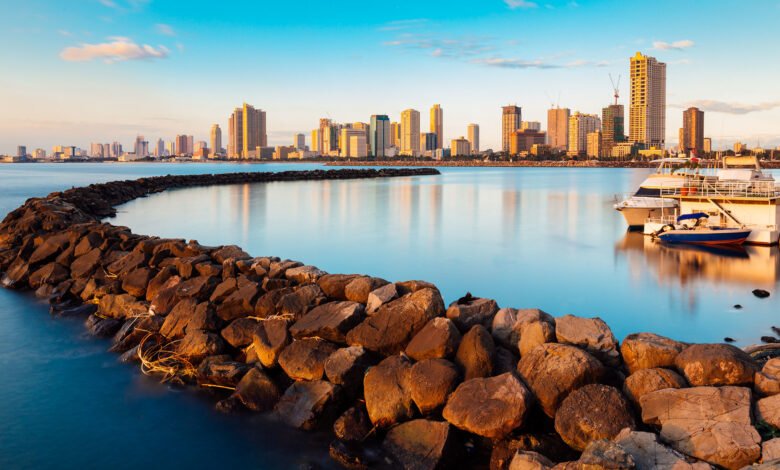Manila Time: Discovering the Heartbeat of the Philippines

Manila time is more than just a way to tell the hour; it represents the vibrant life and energy of the Philippines’ capital. With a population of over 16 million people, Manila is a bustling city that never sleeps. From the busy streets filled with jeepneys to the colorful markets, every moment in Manila is alive with culture and excitement.
As the sun rises in Manila, the city begins to wake up. People start their day by drinking coffee and enjoying delicious breakfast dishes. The sounds of laughter and conversation fill the air as families gather for a meal. This unique Manila time is a reminder of the warmth and spirit of the Filipino people, who embrace life with joy and resilience.
The Importance of Manila Time in Daily Routines
In Manila, time plays a big role in daily activities. The locals value punctuality but also embrace a relaxed attitude. This blend makes life in the city exciting yet comfortable. Each hour is filled with work, family, and fun.
- Morning: People start their day with family breakfast.
- Afternoon: Schools and businesses are busy, filled with energy.
- Evening: Families gather for dinner, enjoying good food and company.
Understanding Manila time helps outsiders appreciate the city’s unique lifestyle. Knowing when to go out or when to stay home is crucial in this vibrant environment. Whether you’re planning to visit or just want to learn more, being aware of how time influences daily life in Manila is essential.
Exploring the Unique Culture of Manila Time
Culture in Manila is rich and diverse. The blend of traditions from different regions creates a vibrant atmosphere. Festivals are common, and they reflect the joy of the people. Events like Fiesta bring communities together to celebrate with food, music, and dance.
Manila time also embraces modern influences. Young people enjoy new trends, mixing them with traditional values. This balance makes the city a fascinating place to explore. Whether you are walking through historic streets or shopping in modern malls, the culture of Manila surrounds you.
Celebrating Festivals: The Magic of Manila Time
In Manila, festivals are special times filled with excitement. The Ati-Atihan Festival, for example, showcases colorful costumes and lively parades. Families participate in these celebrations, making memories together.
- Street Dancing: Vibrant performances that attract many visitors.
- Food Stalls: Delicious local dishes that everyone enjoys.
- Community Spirit: Neighbors come together to celebrate, strengthening bonds.
Such events highlight the essence of Manila time. They remind us that while life can be busy, taking time to celebrate is important. The joy during festivals brings smiles to faces, showing the warmth of the Filipino people.
How Manila Time Connects People Across Generations
Manila time is a bridge between the past and the present. Older generations share stories with the young, passing down traditions and values. This connection helps preserve the rich history of the city. Families often gather to reminisce about their roots, creating a sense of belonging.
Community gatherings are common, allowing people to bond over shared experiences. Festivals, holidays, and even daily meals create opportunities for connection. Everyone, from grandparents to children, plays a part in these moments.
- Storytelling: Older family members share tales from their youth.
- Shared Meals: Cooking traditional dishes together fosters love.
- Cultural Events: Participation in local festivities strengthens ties.
By understanding the significance of time in Manila, we see how it brings people together. It’s about more than just hours and minutes; it’s about creating memories and building relationships. As you embrace the Manila time, you also embrace the heart of its people.
How Manila Time Shapes Business and Economy
Manila time is crucial for the city’s bustling economy. The capital is the economic heart of the Philippines, where many businesses thrive. Understanding local time helps entrepreneurs plan and operate successfully. Being aware of the hours of operation can greatly influence the success of a business.
The working hours in Manila are usually from 8 AM to 5 PM, but many people start their days even earlier. Businesses such as restaurants, shops, and markets often open before dawn to serve customers. This early start allows them to maximize their profits and meet the needs of early risers.
- Local Markets: Vendors set up their stalls as the sun rises, offering fresh produce.
- Cafes and Restaurants: Many serve breakfast from early morning until late at night.
- Corporate Offices: Most businesses follow standard hours, allowing for smooth operations.
This business culture highlights the importance of manila time in the economy. Companies that adapt to the local schedule often do better. They can connect with customers and provide services that meet their needs. Moreover, understanding the rhythm of Manila’s work life helps build stronger relationships between businesses and the community.
The Future of Manila Time: Growth and Sustainability
As Manila continues to grow, the concept of time becomes even more significant. Urbanization has led to challenges such as traffic congestion and pollution. People are beginning to recognize the importance of sustainability and how it connects to their daily lives.
The government and local organizations are working hard to promote green initiatives. Public transport improvements, eco-friendly buildings, and community programs aim to create a healthier environment for everyone. Understanding how manila time fits into these plans is essential for progress.
- Transportation: New bus and train systems are being developed to reduce traffic.
- Green Spaces: Parks and community gardens help improve air quality.
- Sustainable Practices: Local businesses are encouraged to adopt eco-friendly methods.
As the city looks to the future, embracing a sustainable lifestyle is key. The residents of Manila are becoming more aware of their impact on the environment. By understanding and adjusting their daily routines, they can contribute to a cleaner, healthier city.
A Day in Manila: What Does Manila Time Look Like?
Every day in Manila is a unique experience filled with activity and culture. The morning starts with the bustling sounds of jeepneys and street vendors selling breakfast. Many people rush to work or school, filling the streets with life. It’s a lively scene that shows the energy of the city.
As the day progresses, different activities unfold. Students attend classes, workers complete their tasks, and families enjoy their time together. The afternoon is often busy, with everyone moving to their next destination.
- Afternoon Breaks: People often enjoy snacks or coffee at local shops.
- Evening Gatherings: Families come together for dinner, sharing stories and laughter.
In the evenings, Manila transforms into a vibrant nightlife hub. Restaurants, bars, and street markets come alive. People enjoy food, music, and the company of friends. This lively atmosphere showcases the joy and spirit of Manila time, reminding everyone to savor the moment.
Conclusion
In understanding manila time is a wonderful way to connect with the heart of the city. It shows us how people live, work, and celebrate together. Each moment in Manila is filled with excitement and warmth. Whether it’s enjoying a delicious meal or joining in on a fun festival, every experience is special.
As you learn more about Manila, remember that time is not just about hours and minutes. It is about creating memories, sharing stories, and being with loved ones. Embracing Manila time means enjoying every moment and celebrating life in this amazing city. So, whenever you think of Manila, think of the vibrant culture and joyful spirit that makes it truly unique!
FAQs
Q: What is Manila time?
A: Manila time refers to the local time in Manila, Philippines. It is important for daily life, business, and cultural activities.
Q: How does Manila time affect daily routines?
A: Manila time influences when people wake up, work, and gather for meals and celebrations, creating a lively daily rhythm.
Q: What are some popular dishes enjoyed during Manila time?
A: Popular dishes include tapsilog (beef, rice, and egg), adobo (marinated meat), and various street foods like fish balls.
Q: Why are festivals important in Manila?
A: Festivals celebrate culture, bring communities together, and allow people to enjoy music, food, and fun activities.
Q: How is Manila working towards sustainability?
A: Manila is improving public transport, creating green spaces, and encouraging eco-friendly practices to promote a cleaner environment.



